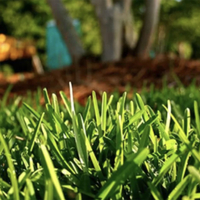How to make a front yard more inviting – 6 real life examples from landscape designers
We look at how experts have upped the curb appeal of these properties
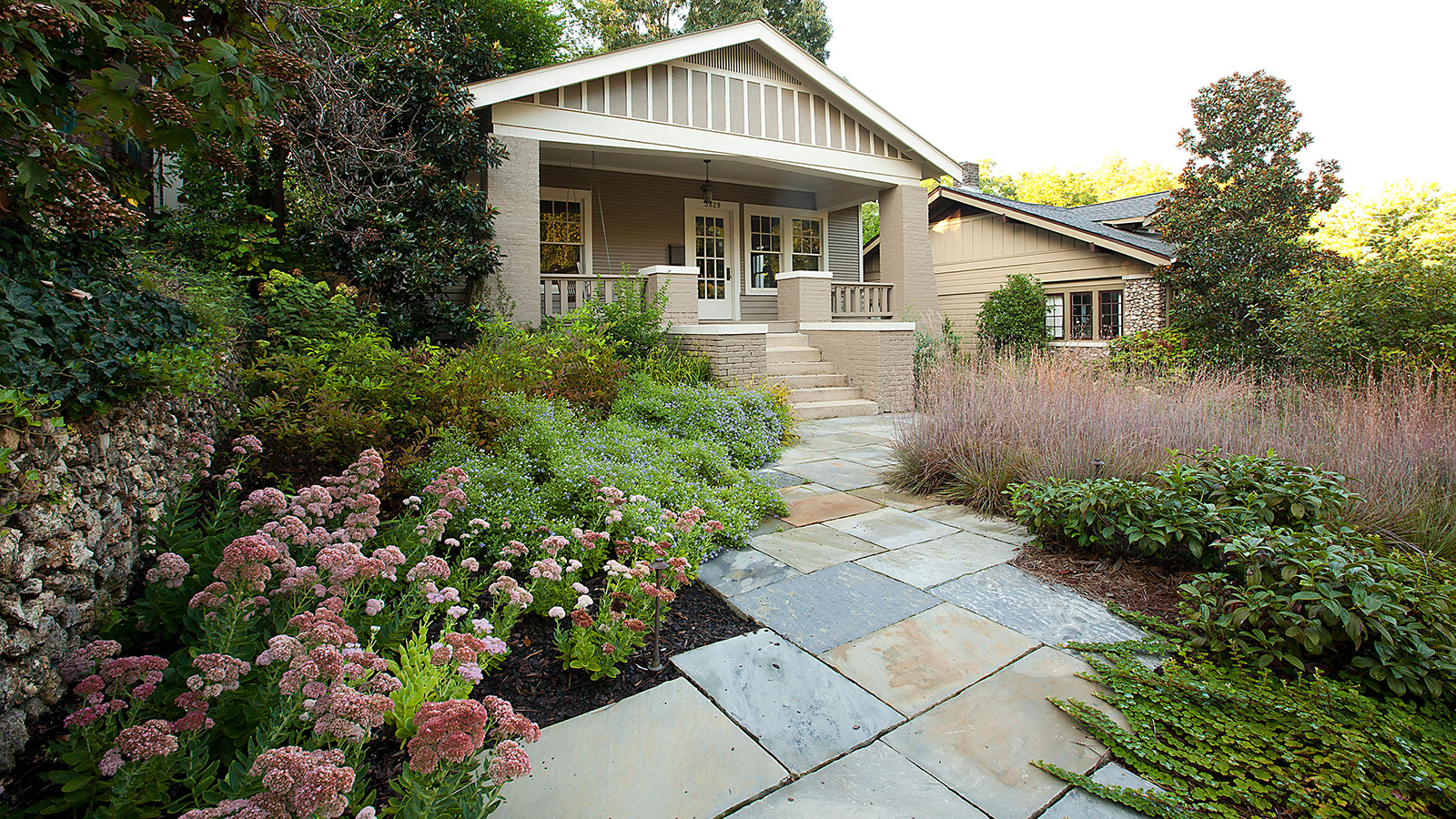

If you've worked hard on improving your backyard, your eye may now be fixed on how to make a front yard more inviting.
And it's not just about getting a perfect lawn. In urban and suburban areas, homeowners are redesigning their front plots to create privacy with low walls or native plants; as sunny spots to grow herbs, flowers and vegetables; and to gain extra living space by building patios or decks.
Originally, the curb-appeal concept entailed painting your house, making repairs, and landscaping your front yard to attract possible homebuyers and to hopefully make your neighbors happy.
Now, a truly inviting front yard should not only reflect the architectural design of a house, it should also be a reflection of those who live inside.
We have profiled the work of six landscape designers to showcase their real life projects and demonstrate how front yards have evolved beyond cookie-cutter turfed lawns, to well-planned, stylish layouts.
Creating a useable and inviting space in your front yard
If you think it’s time to rethink your front yard, the possibilities are vast. Reconfiguring your space to grow fresh food, promote wildlife, or for a better environment are great reasons to renovate your front yard. Or perhaps you just want to turn that dull space into a low maintenance front yard and boost its curb appeal.
1. Go green to create a lush entry
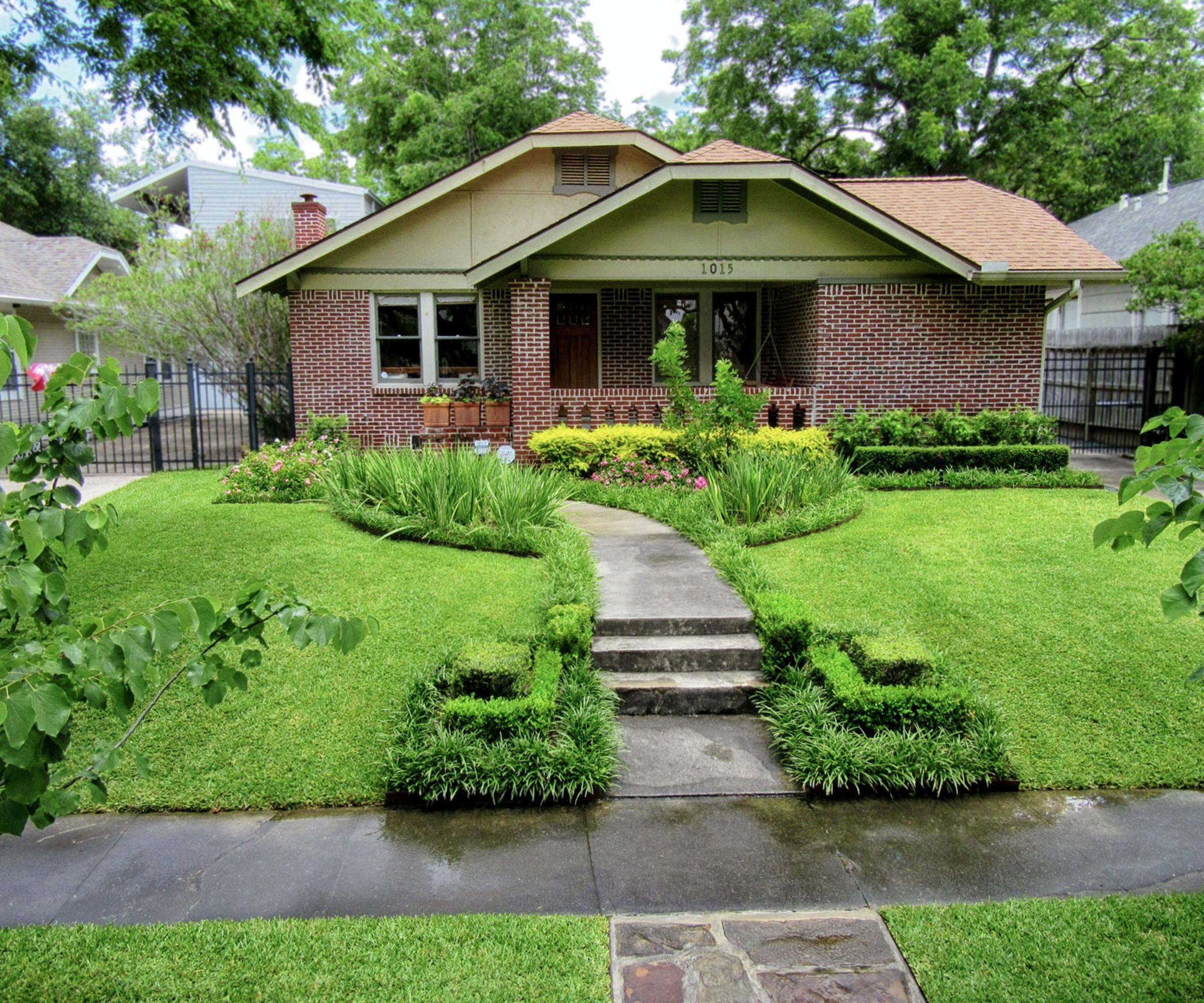
Keep your front yard classic with a traditional lawn and path design
As one of the oldest neighborhoods in Houston, Texas, the Heights boasts a charming mix of Victorians, bungalows, and brick cottages. The owners of a cottage tasked David Morello Garden Enterprises (DMGE) with a remodel that would make them feel more 'at home'.
In just three months, DMGE transformed the outdoor spaces, making the inviting front yard walkway lush and green with plants that soften the entrance.
The team found it a challenge to design a year-round garden with low-maintenance front-yard plants that would be able to withstand Houston’s summers, which are hot, humid, and can be oppressive.
Meeting the requirements were redbud trees like the Cercis occidentalis var. texensis; Japanese yew (Taxus cuspidata); Japanese boxwood hedges (Buxus microphylla); Sunshine ligustrum (Ligustrum sinense 'Sunshine’) with year-round golden foliage; and cardamom-leaf ginger (Alpinia nutans). The vivid green lawn is St. Augustine (Stenotaphrum secundatum).
Other Houston-tolerant choices include wood ferns and foxtail ferns, lilyturf (Liriope muscari), irises, and dwarf yaupon holly (Ilex vomitoria 'Nana’). Three terracotta pots changed-out with annuals provide seasonal color.
Working with a budget, DMGE used fieldstone set in mortar for the front landing, while blackstar gravel (basalt) was used on the concrete driveway and service areas. Planting beds are delineated with brown steel garden edging, which help to contain the soil, mulching, and plants.

For over a decade, David Morello, with his creativity and love of the great outdoors, coupled with a strong Midwest work ethic, built a group of seasoned design professionals and horticulturists providing comprehensive service in the fields of Landscape Architecture, Construction, and Horticultural Garden Care for the most discerning clients.
Palmetto® St. Augustine Grass Plugs | Was $89.99, now $79.19 at Nature Hills
This is a great choice of grass seed if you live in one of the southern states. It's heat tolerant and, once established, has excellent tolerance to drought.
2. Add striking containers to a front porch garden
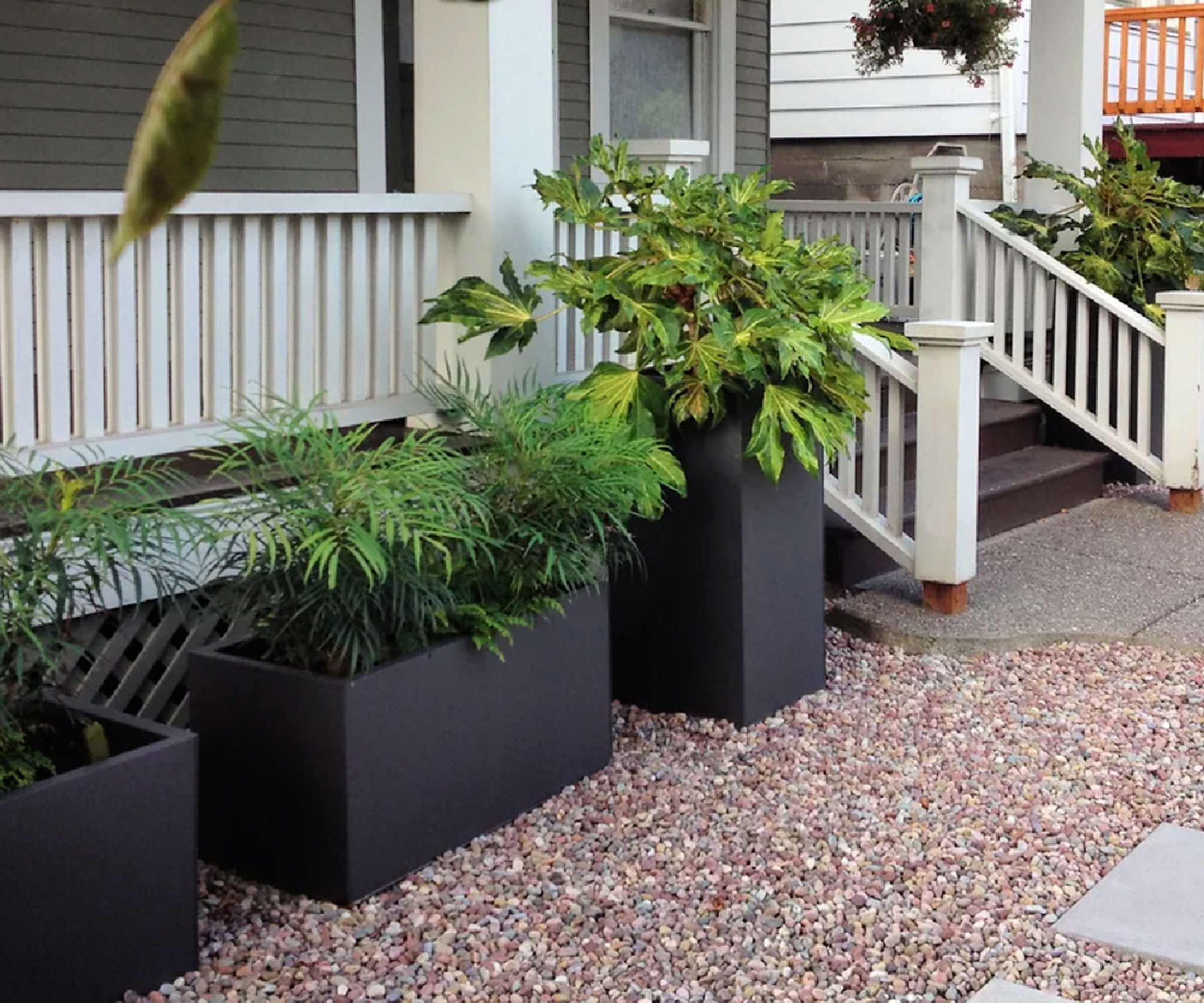
Combine gravel and large planters for a low-maintenance front yard
Gravel garden ideas can be a smart choice if you prefer the idea of a low maintenance front yard. The landscaping of this house in Tacoma, Washington, designed by Gardendigs, includes rainbow rock with inset rectangular concrete pavers.
Architectural tall black planters provide a nice contrast to the white porch and are filled with shade-loving Mahonia (Mahonia 'Soft Caress') and the evergreen Japanese aralia (Fatsia japonica) try Jiarui - Green Fatsia Japonica at Walmart.
Broad-leafed plants like the aralia paired with architectural planters help to increase their visual impact from the curb or street. Anything smaller or more delicate would get lost.
It's important to pay attention to the location of your container gardening ideas and work out whether they are more suited to shade, sun, or a combination of both. For curb appeal, use the same or similar planters to avoid a mismatched look. Continuity is also a good rule for the plants that go in the containers.

Gardendigs owner Susan Ryan is an APLD Certified Landscape Designer. She served 12 years as a Community Master Gardener and has studied extensively at South Seattle College's Landscape Design, Construction and Horticulture program.
3. Plant between pavers

Use planting to soften your front yard
This Los Angeles front garden is bursting with colorful succulents and flowers, with pockets of planting added throughout the space to soften the effect of the hardscaping.
A welcoming pathway leading from the street to the front door is made of flagstone with tough ground cover plants, in this case silver carpet (Dymondia margaretae), between the pavers to soften the look.
Bosler Earth Design planted with future growth in mind. 'I always design for 80 per cent of the plant’s full growth and space accordingly,' says Catherine Bosler.
Her main goal was to turn a thirsty green lawn into a colorful cohesive landscape that would save on water usage. The palette consists of mauve, yellow, greens, burgundy, and hints of orange and blue.
Primarily a mix of Australian and South African plants (which grow well in Southern California), the garden includes purple fernleaf acacia (Acacia baileyana ‘Purpurea’), pincushions (Leucospermum), kangaroo paws, euphorbias, and blue fescue. A clever mix of succulents finishes the overall scheme to great effect.

Catherine combined her design skills with the love of architecture and gardens to study Landscape Architecture in the Landscape Architecture Program at UCLA Extension. Catherine presented her thesis in 2008 and graduated with distinction from the department for her presentation, "Baldwin Hills - The reclamation of an oil field into a multi-beneficial energy space".
4. Add a front deck
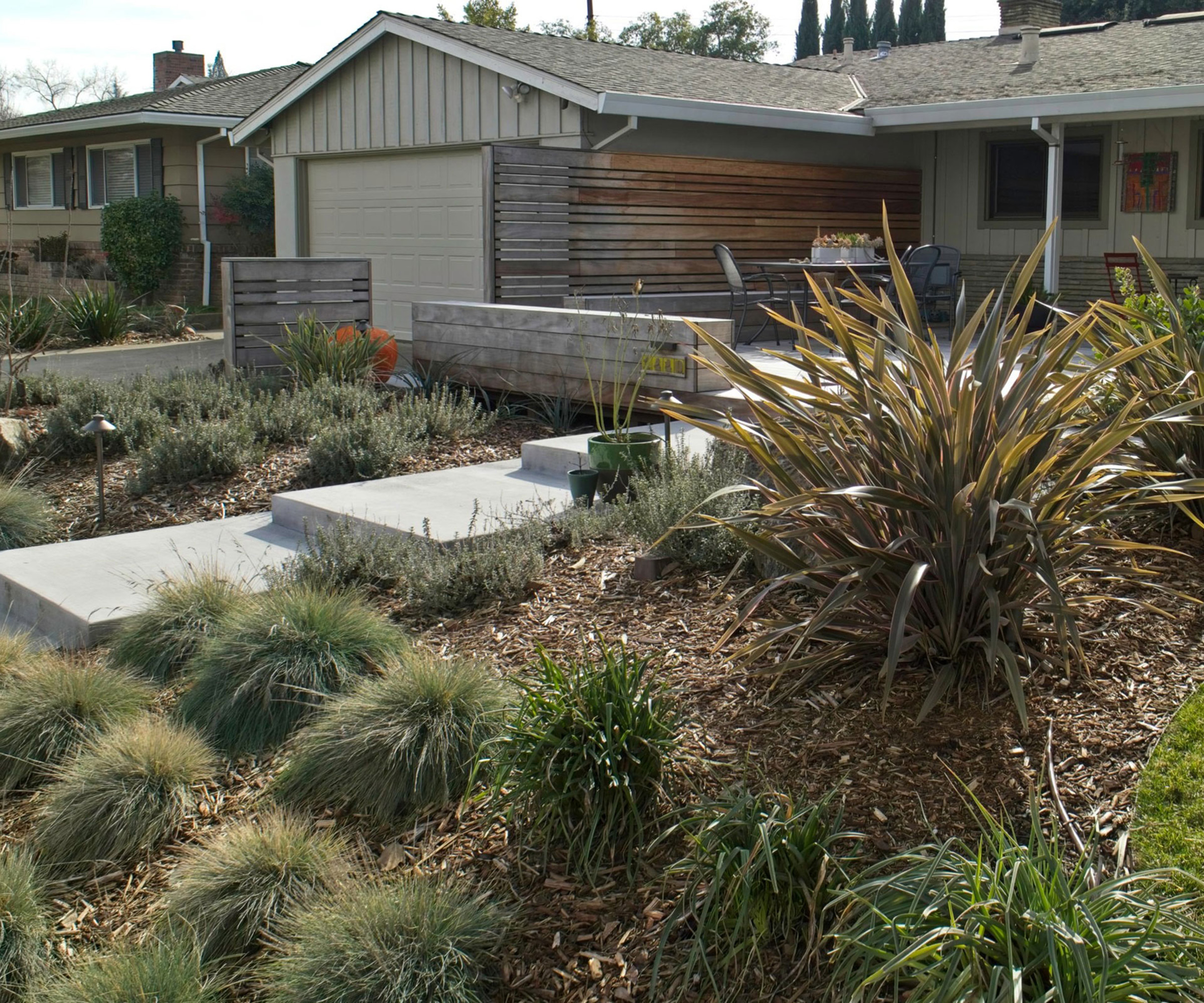
A front yard you'll want to spend time in
The backyard of this one-story ranch-style house located in California’s Central Valley lacked any workable outdoor living spaces, so the homeowners asked the Sacramento-based firm of Luciole Design to incorporate some deck ideas on the front porch instead.
With a fresh start and amended clay soil, Luciole used a mix of gray fescue; shrubby, dark green germander (Teucrium chamaedrys); strappy New Zealand flax (Phormium tenax); and two kinds of flax lilies: Dianella tasmanica 'Variegata' and D. revoluta ‘Coolvista’. Underneath is soft brown bark mulch. A patch of turf was planted for the kids to play on.
Concrete paths were poured to flow logically from the street and driveway to the front door, while leaving room for outdoor seating on the front deck. A wood bench and horizontal-slat fences at various heights create privacy for the deck along with consistency in hardscape materials.
5. Create a tropical oasis
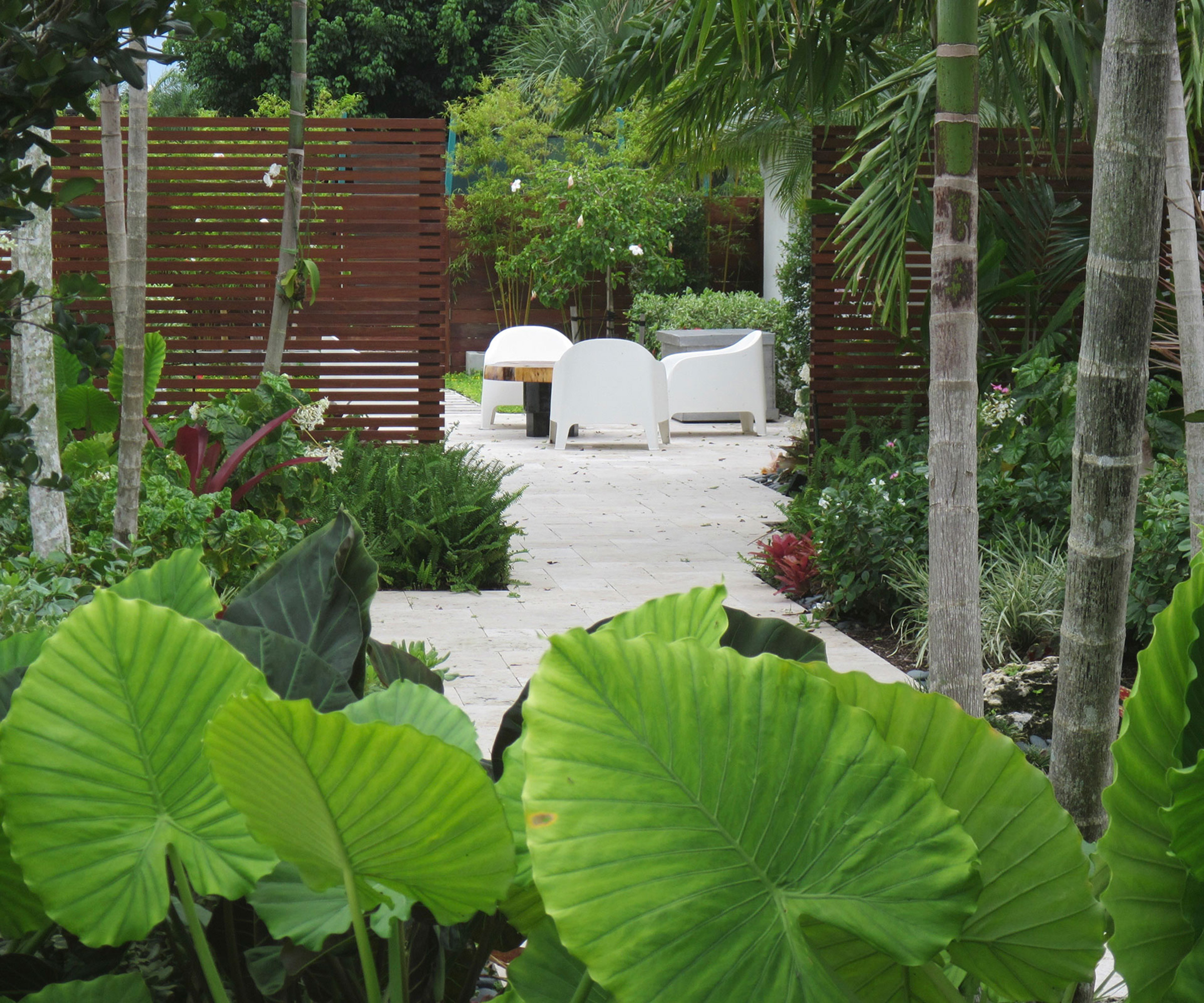
Make a front yard more inviting with a partially obscured view
After an island vacation, everyone wants to recreate that feeling of paradise in their own yards with some eye-catching tropical garden ideas. Unfortunately, most of those exotic plants will only grow indoors, if you’re lucky. That is, unless you live in South Florida, which is home to a tropical climate.
For the front yard landscaping ideas in this Miami plot, landscape architect Matthew Giampietro designed pathways lined with colorful tropicals that lead to a private front patio. Horizontal wood-slat fencing and gates provide some necessary front yard privacy.
In addition to assorted palms, which thrive in this environment, Giampietro carefully considered the landscaping around trees, opting for a stunning mix of colorful bromeliads, ornamental grasses, birds of paradise (Stretlitzia), crotons (Codiaeum variegatum), Chinese fan palms (Livistona chinensis), philodendrons, and variegated or shell ginger (Alpinia zerumbet), among many others.
The paved patio features modern outdoor chairs surrounded by beds filled with smooth river rocks, small flowering trees, fragrant flowers, and palms, for a secluded tropical home-based getaway.

Matthew Giampietro holds a degree in Landscape Architecture, as well as a degree in Horticulture; with over 30 years in the landscaping industry,
6. Incorporate a space for socializing
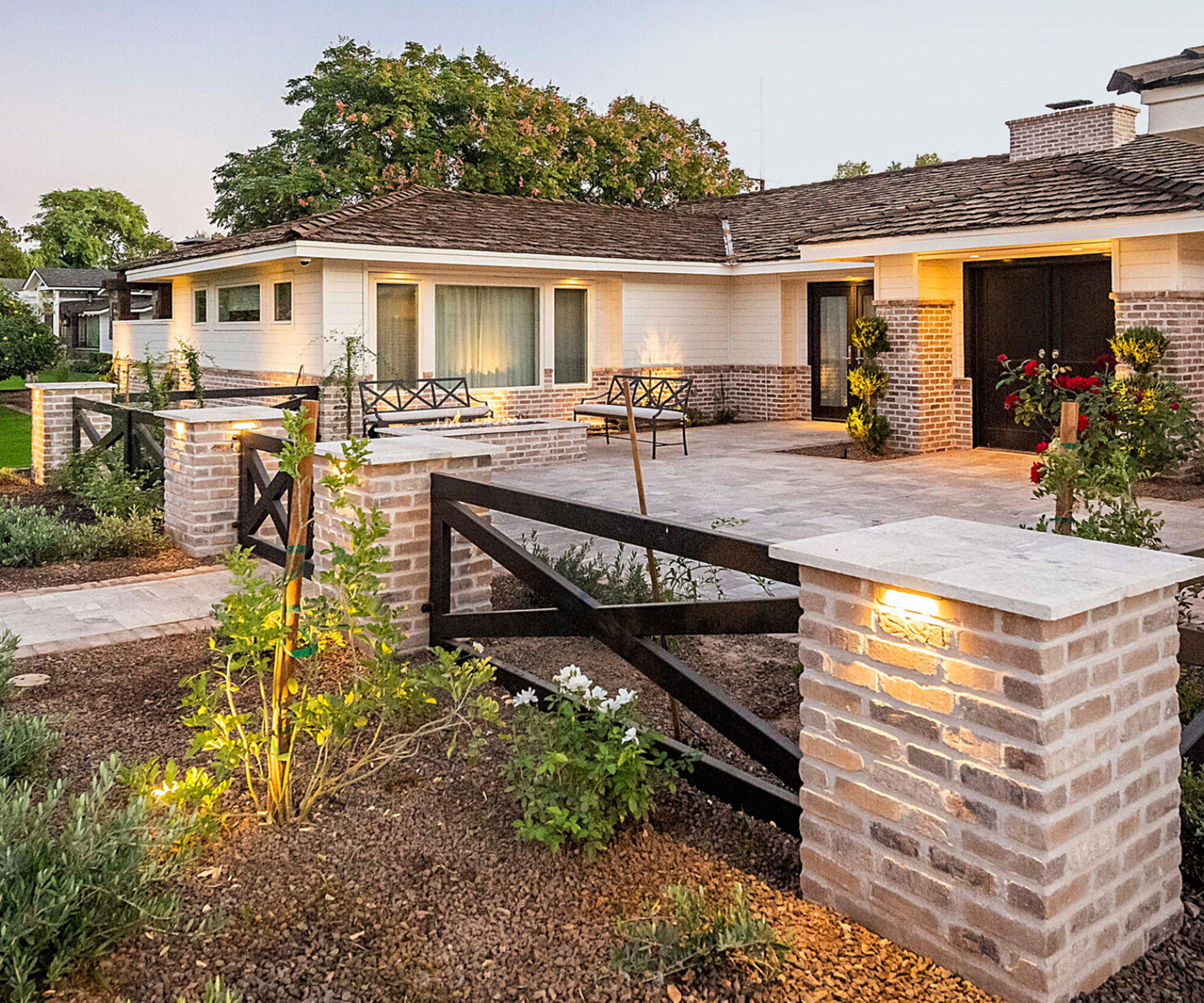
Welcome visitors with an entertaining space in your front yard
Where space allows, a large front yard can offer the opportunity to create additional entertaining zones. The homeowners of this home in Arcadia, Arizona, hired Lavender Landscape Design Co. of Tempe to design a patio where they could socialize with neighbors.
Many aspects of the original yard remain, including the lawn and some of the brick paving, which became a front garden wall for newly installed silver travertine front yard paving idea. The patio is open but enclosed by a low iron fence and an entry gate.
Outdoor heating in the form of a rectangular brick veneer fire pit take center stage in the new layout, while the existing stone veneer on the home’s exterior was replaced with brick veneer to unify the look. Whilst front yard lighting creates ambience after dark.
A clean and modern planting palette includes waxleaf privet (Ligustrum japonicum), dwarf yaupon holly, winter gem boxwood (Buxus sinica), Texas mountain laurel (Sophora secundiflora), fruitless olive trees (Oleo europaea), and several varieties of roses, including Lady Banks, white iceberg, and burgundy iceberg.
FAQs
What plants look good in the front yard?
Start with foundation plants that are evergreens or at least standing throughout most of the seasons. These might be one of two trees, or passing by in a car or on foot. There are no sure-bet plants that will give you a dazzling yard. However, there are some things to consider when you go plant shopping:
- Go with natives, which means plants that are indigenous to your region and grow naturally in uninhabited areas. Check with your local university or a gardening club or society for suggestions.
- Start with foundation plants that are evergreens or at least standing throughout most of the seasons. These might be one or two trees for front yardstrees for front yards, shrubs, or ornamental grasses. Usually, they are planted near the house, walls, fences, paths, or hardscape.
- Foundation plants enhance and sometimes repeat your home’s architectural style. For example, unfussy plants with simple lines and a sculptural quality – like some succulents or sub-tropicals – complement a modern or mid-century modern home, while roses and delicate flowering perennials would look out of place.
- Set a goal to have something in bloom throughout the year for season. This might take some research but is worth the time and effort.
- A lush look can be beautiful, but try breaking up the landscape by incorporating hardscape features, such as an entry path from the street or the door, a small patio, stones and boulders, wood fencing, or stone garden walls.
- Repeat plants for continuity rather than using your front yard as a test site for a vast mix of seedlings and non-natives. Also strive for continuity in form, texture, and color.
- Even devout gardeners get busy, so look for low maintenance ornamental grasses, succulents, shrubs, and perennials. You can save the dirty work for the backyard.
If you are lucky enough to start building a new front yard with a clean slate, consider hiring a garden designer or landscape architect to create a plan.
You can have a look at our guide on how much does a garden designer cost for some handy hint on getting started.
Design expertise in your inbox – from inspiring decorating ideas and beautiful celebrity homes to practical gardening advice and shopping round-ups.

Lisa has a B.A. from California Polytechnic State University, Pomona, and a certificate in landscape design. She's written about gardening and outdoor living since 2008 for various websites and magazines, including About.com, TheSpruce, Gardeningetc, and Laguna Beach Magazine. Lisa and her family spend their spare time restoring their Midcentury Modern home in southern California. One of her longtime goals is to have a sustainable vegetable garden like her grandmother did in Texas.
